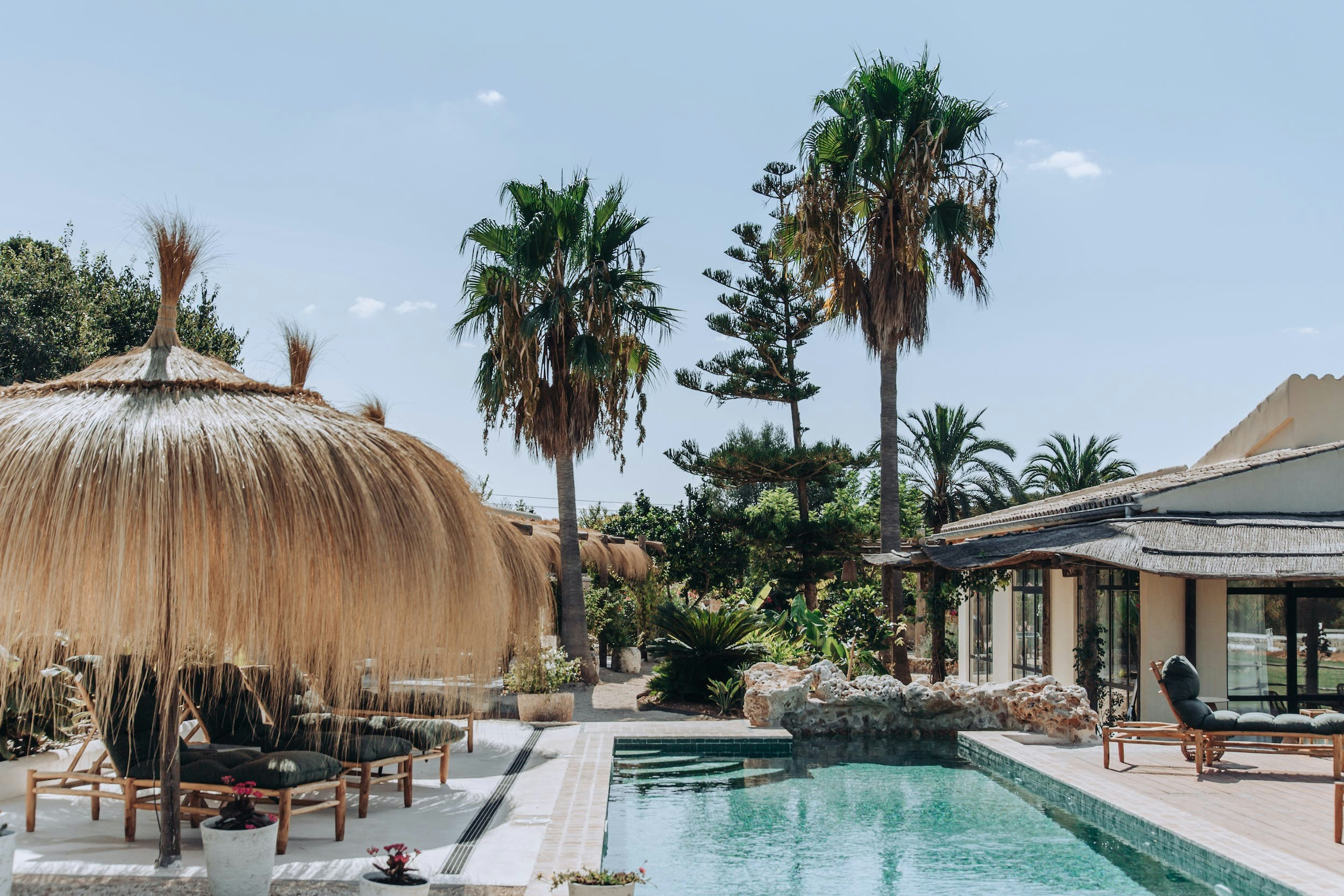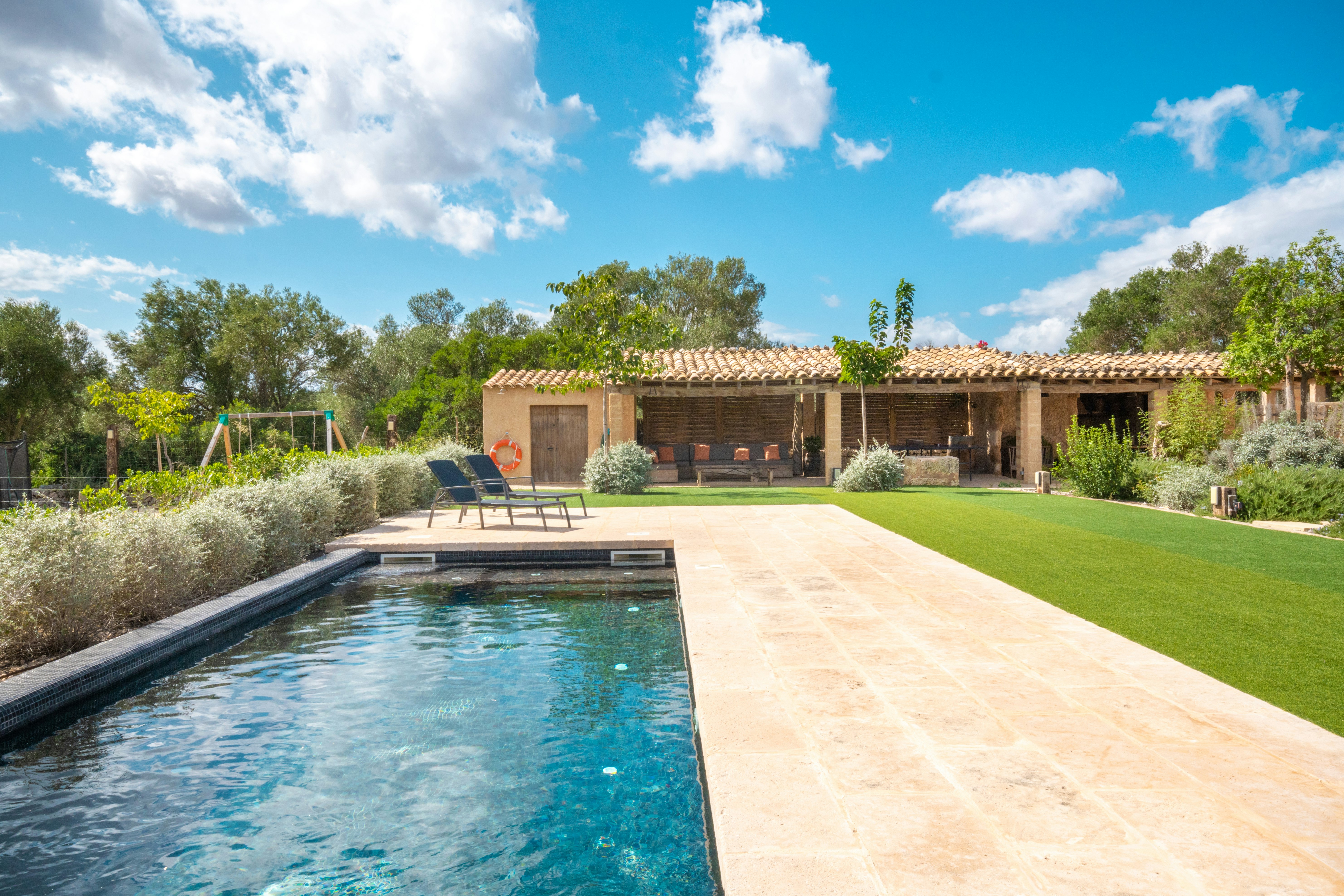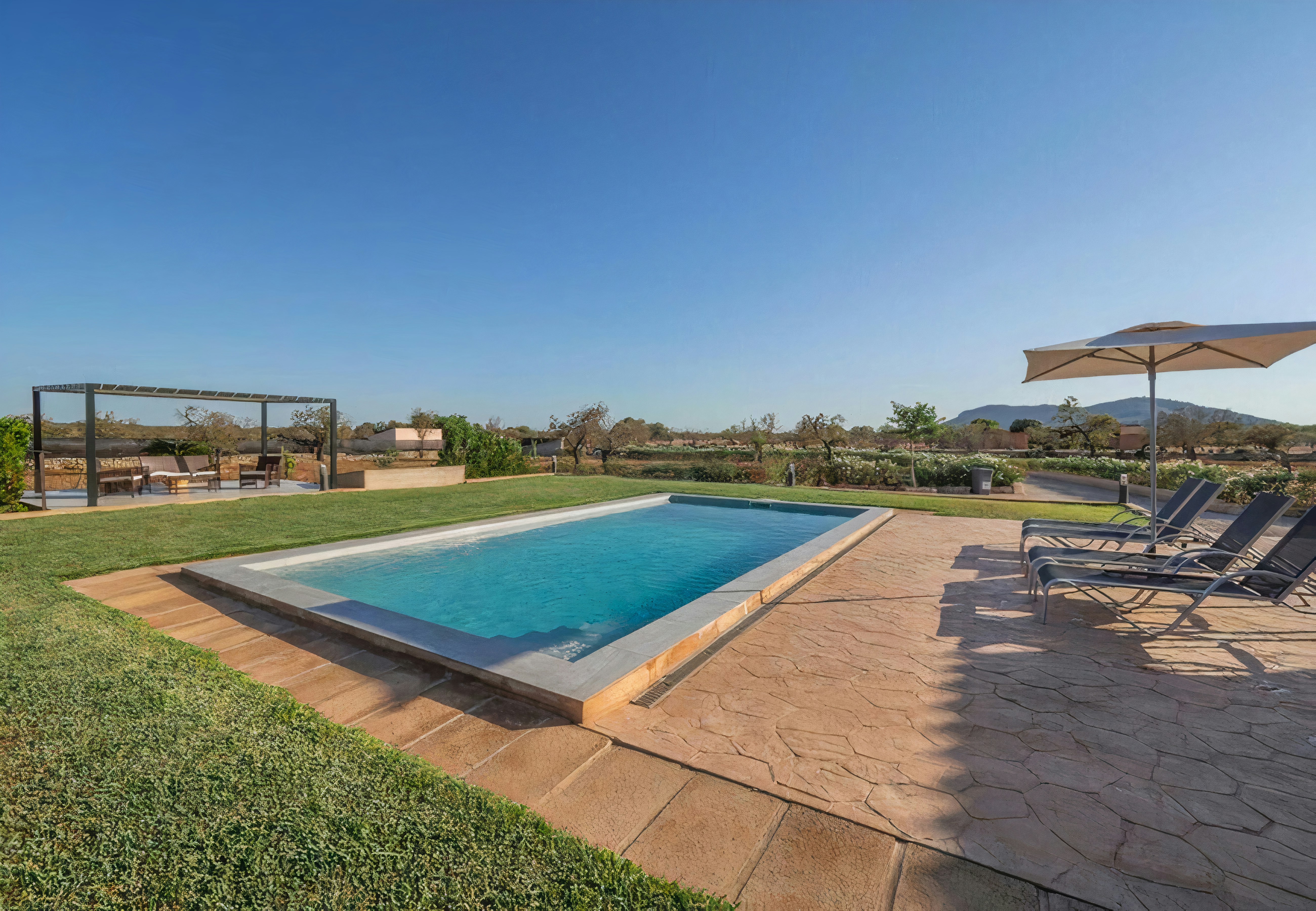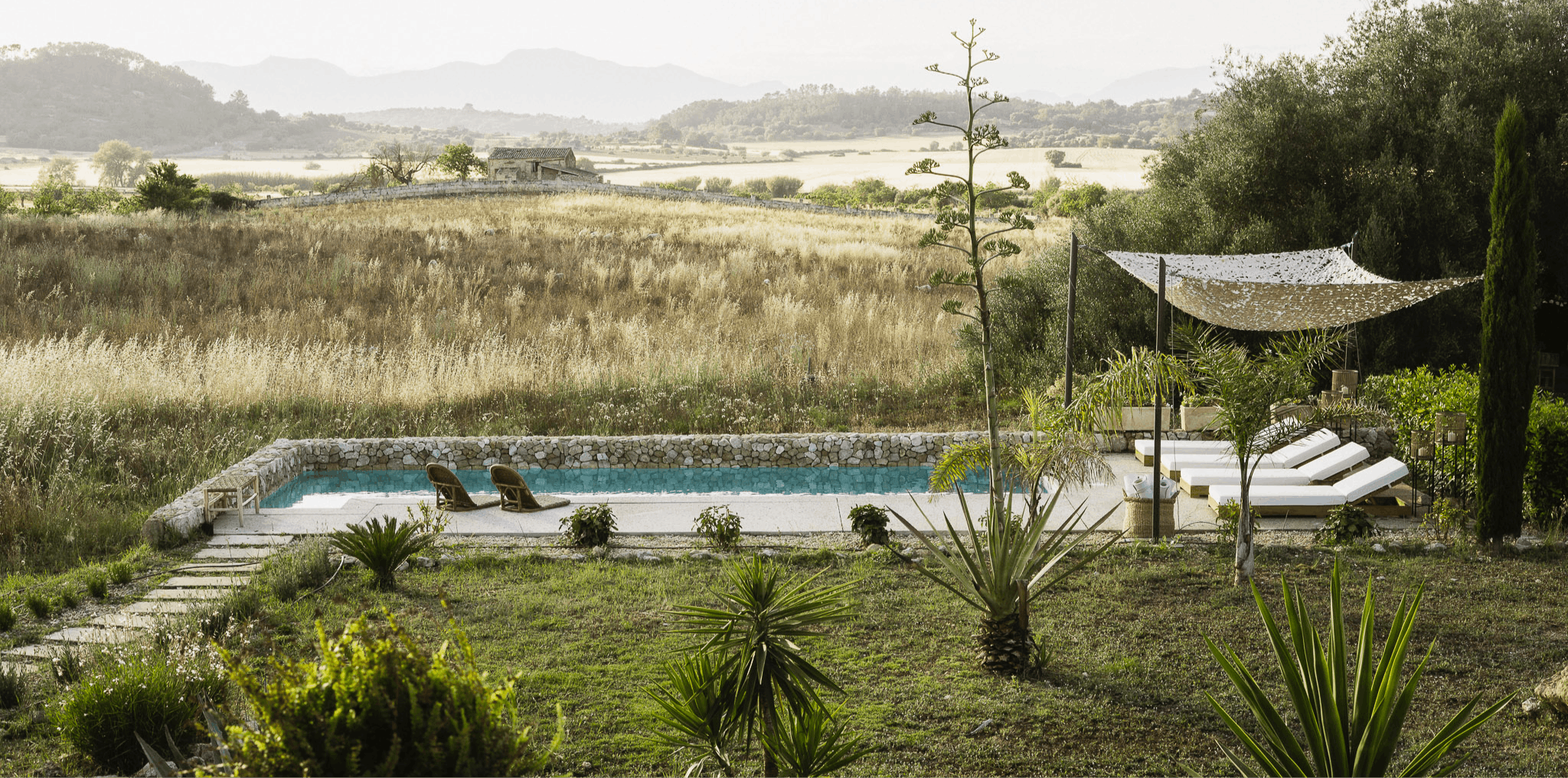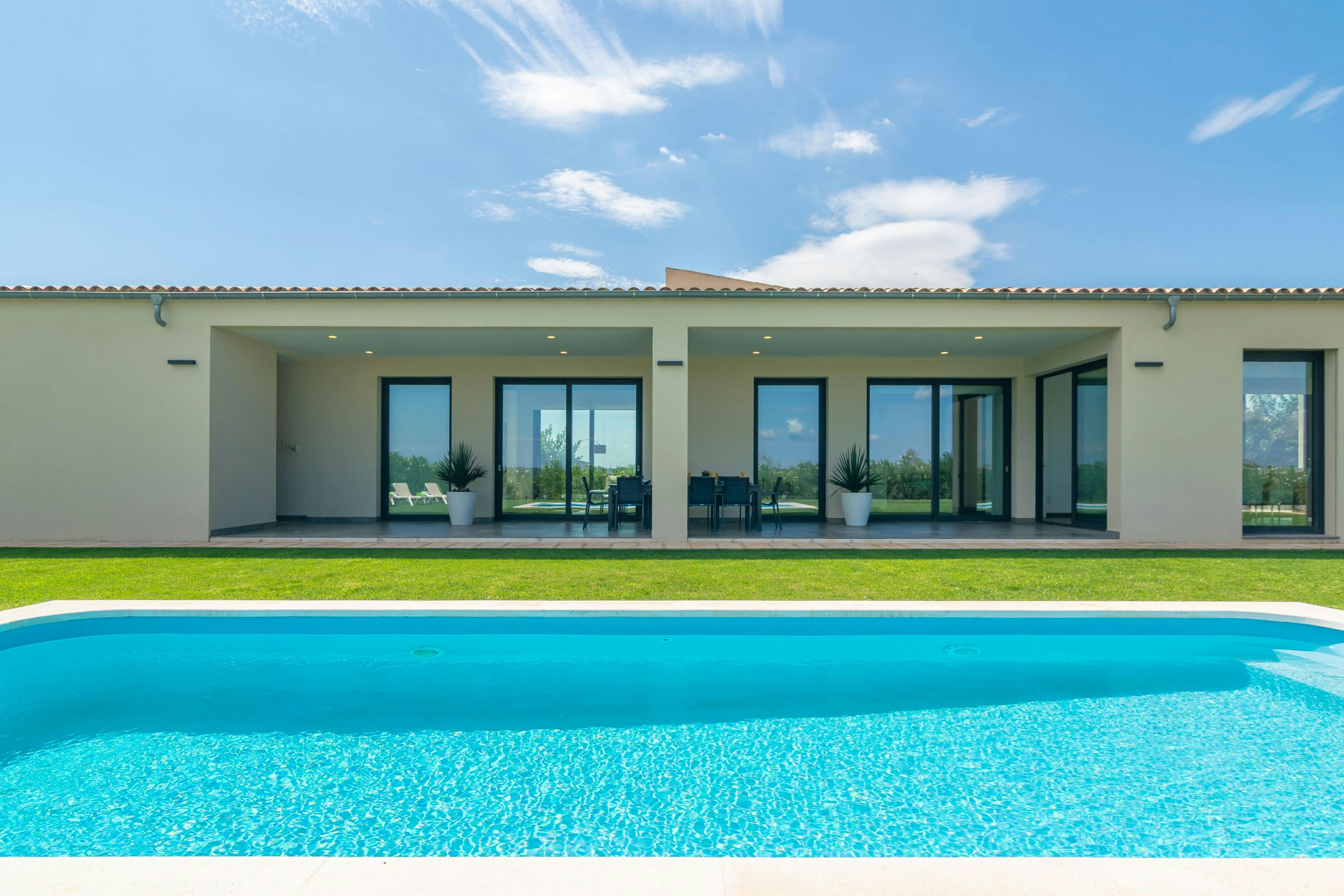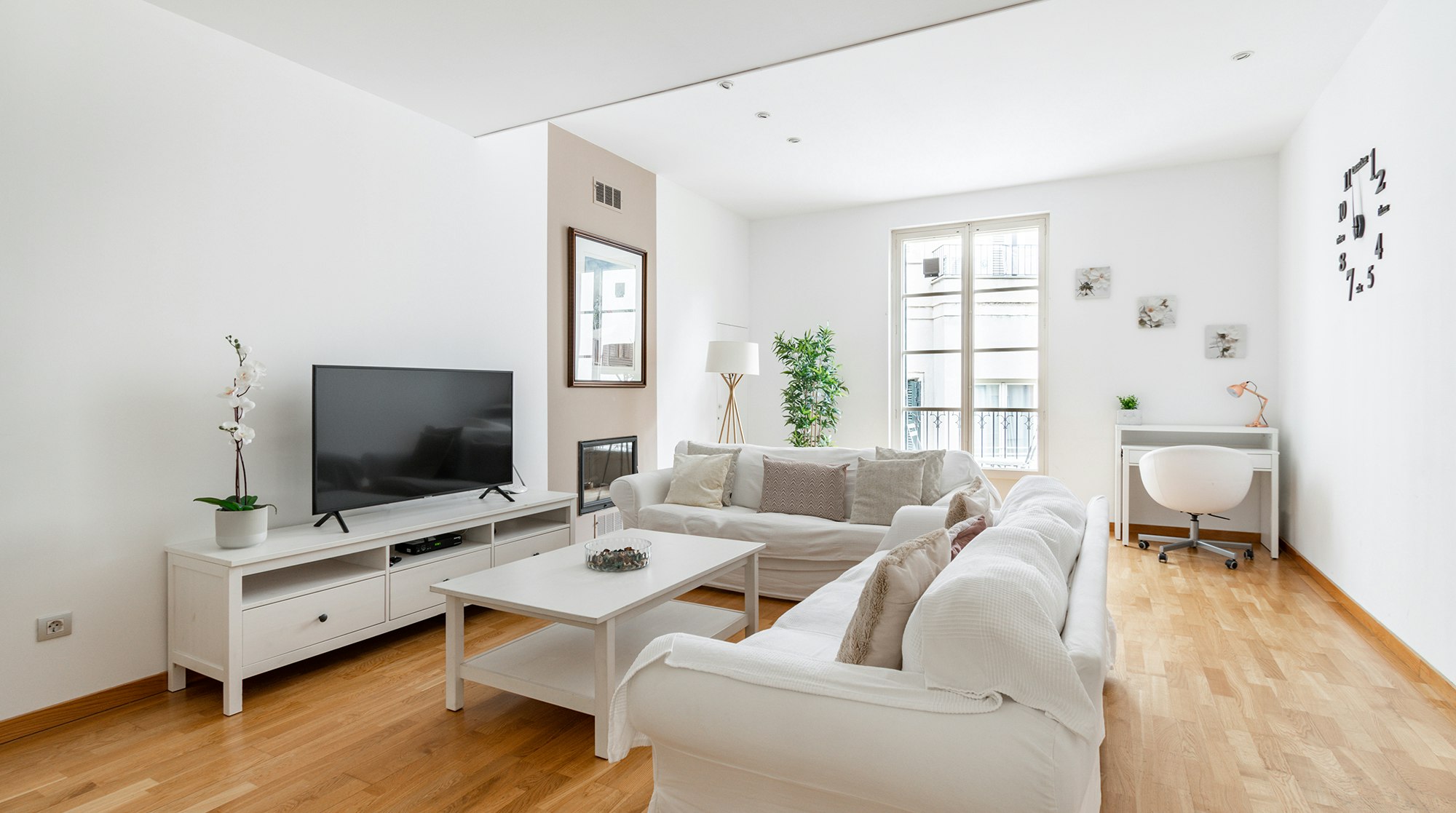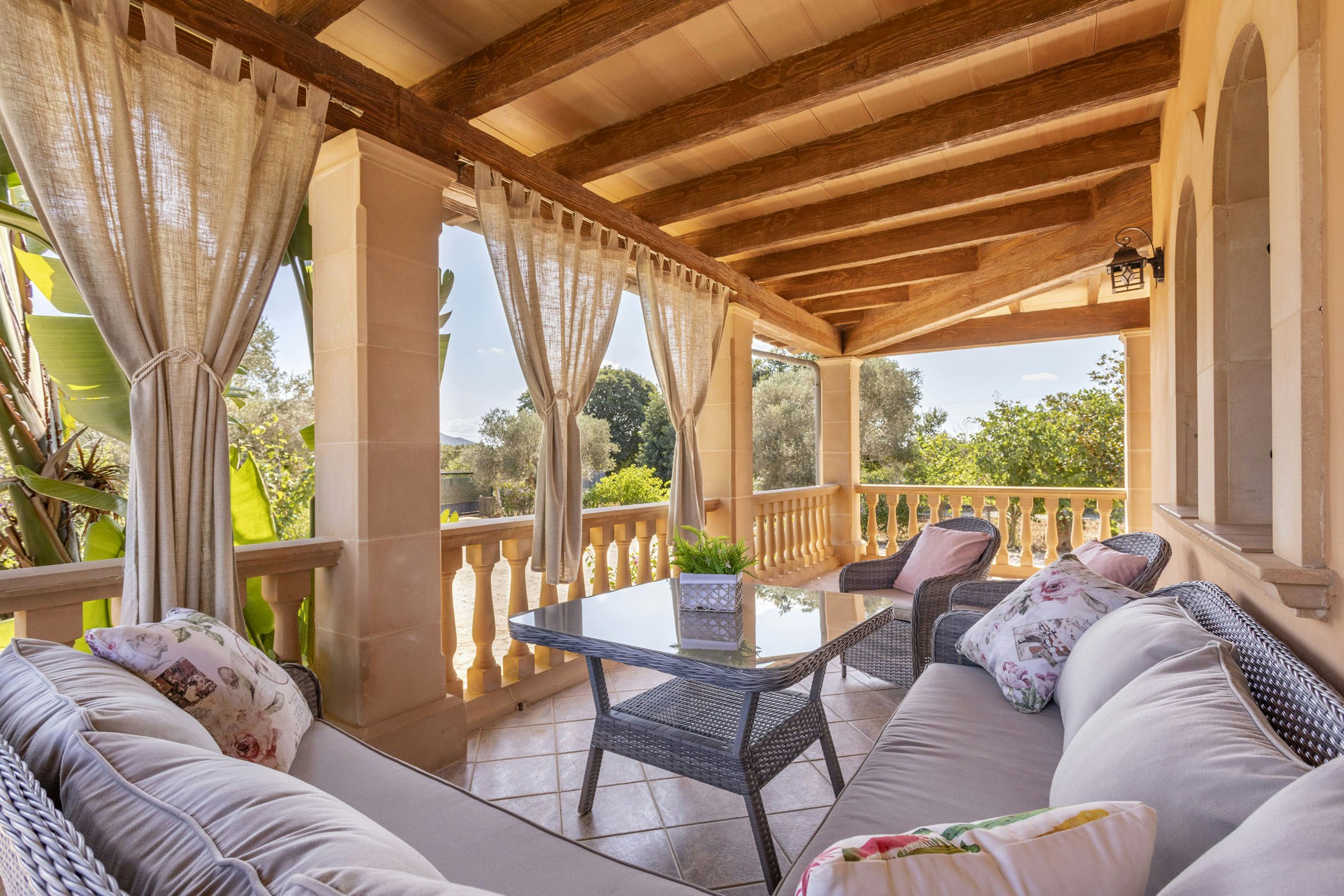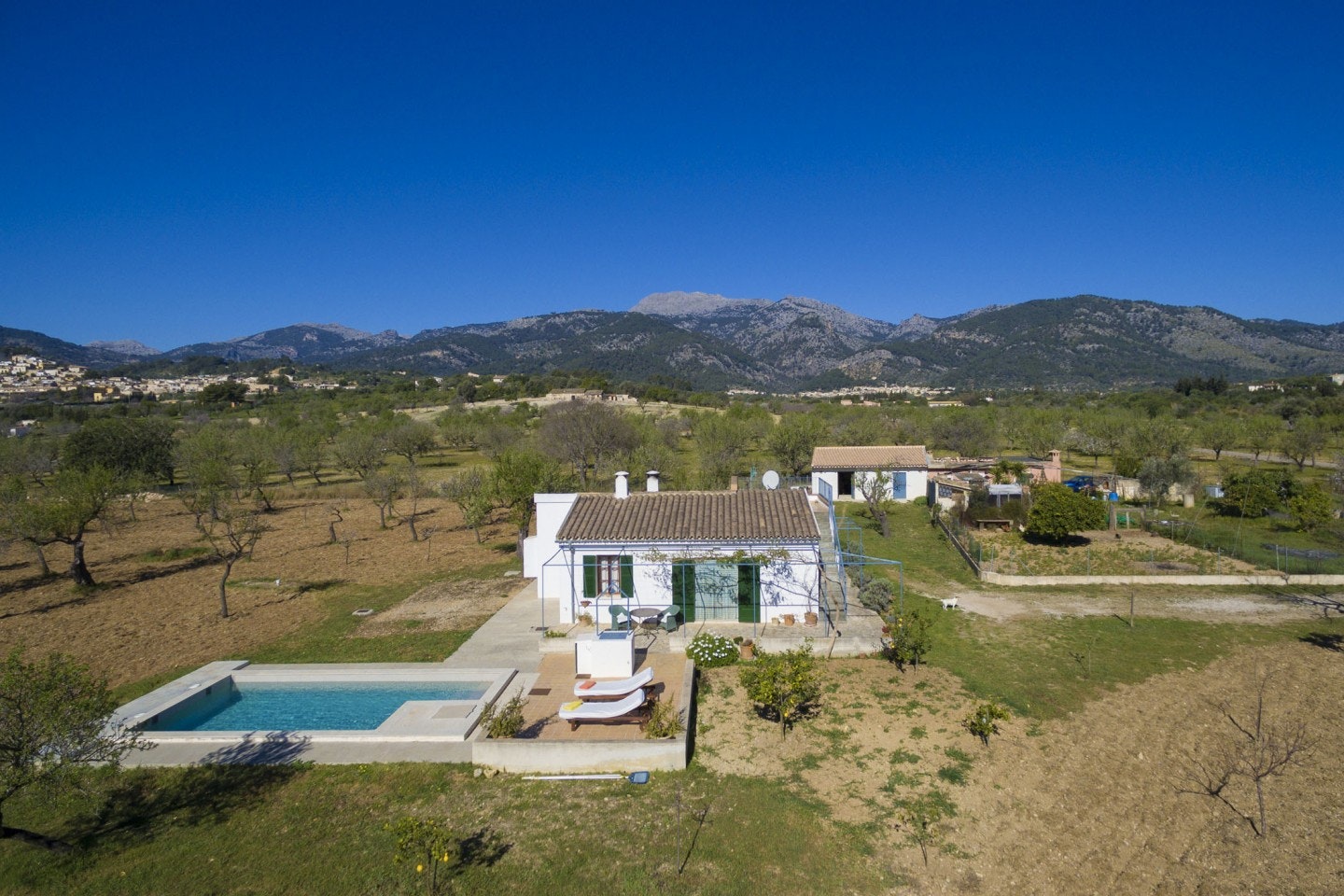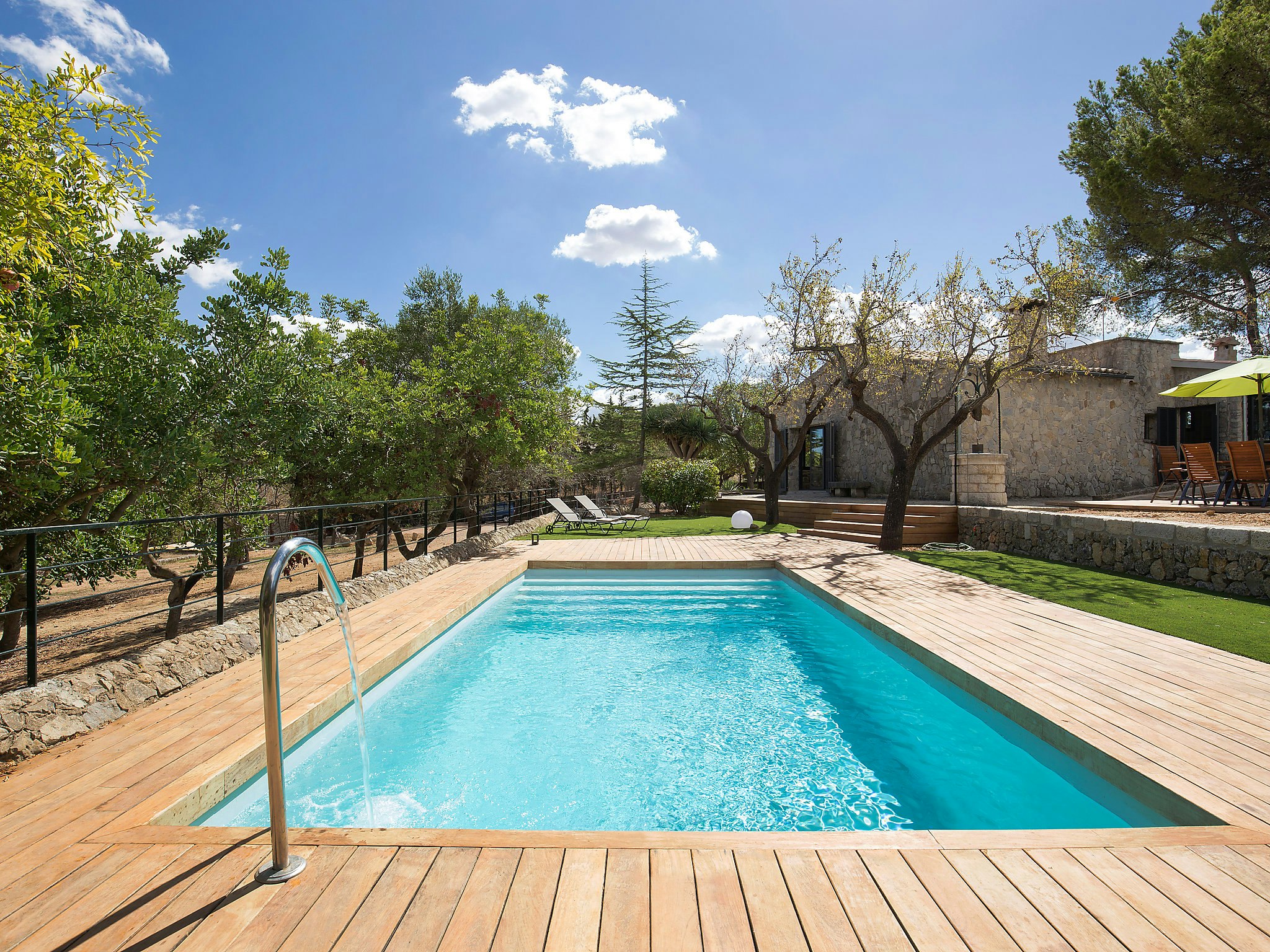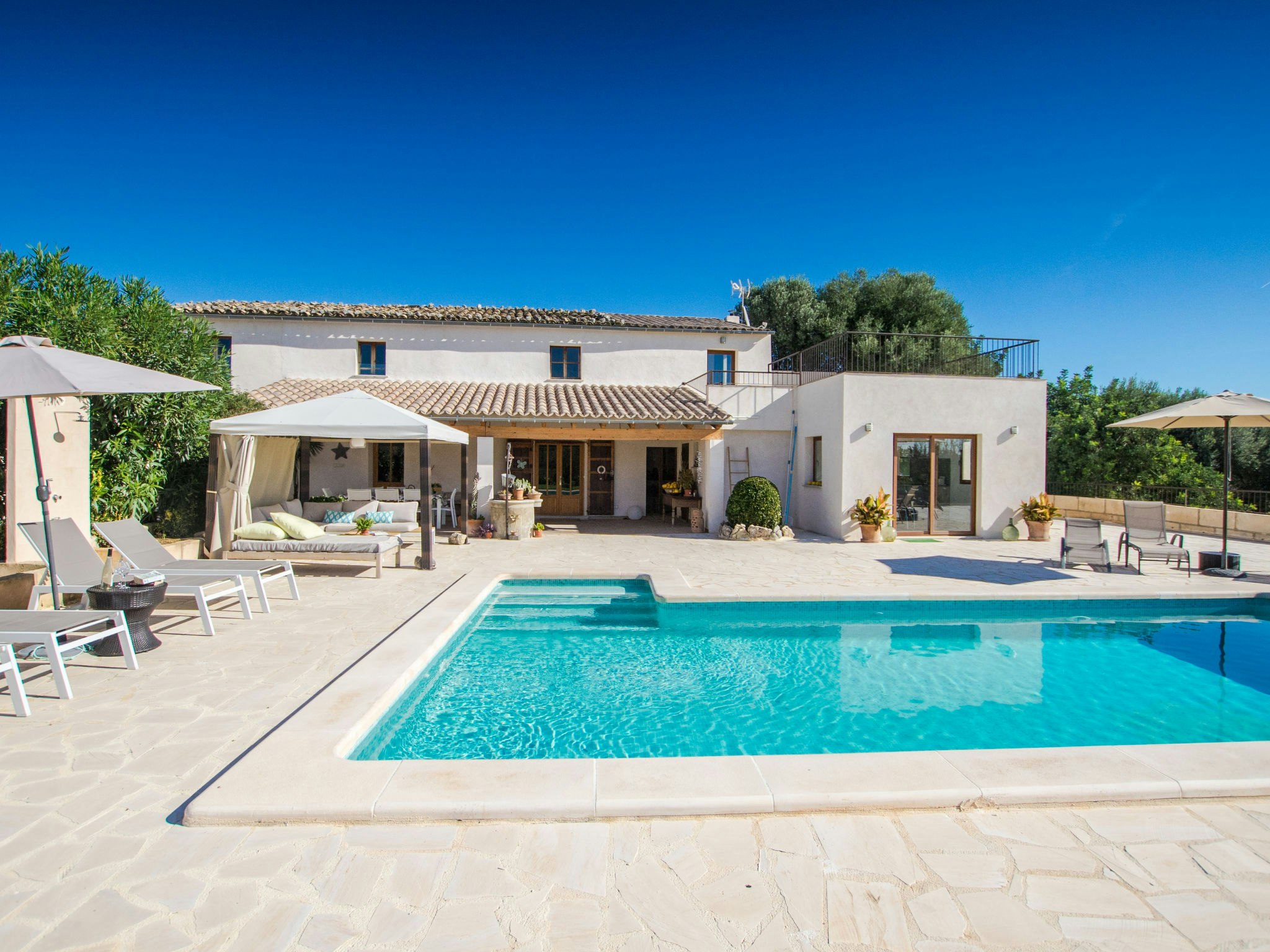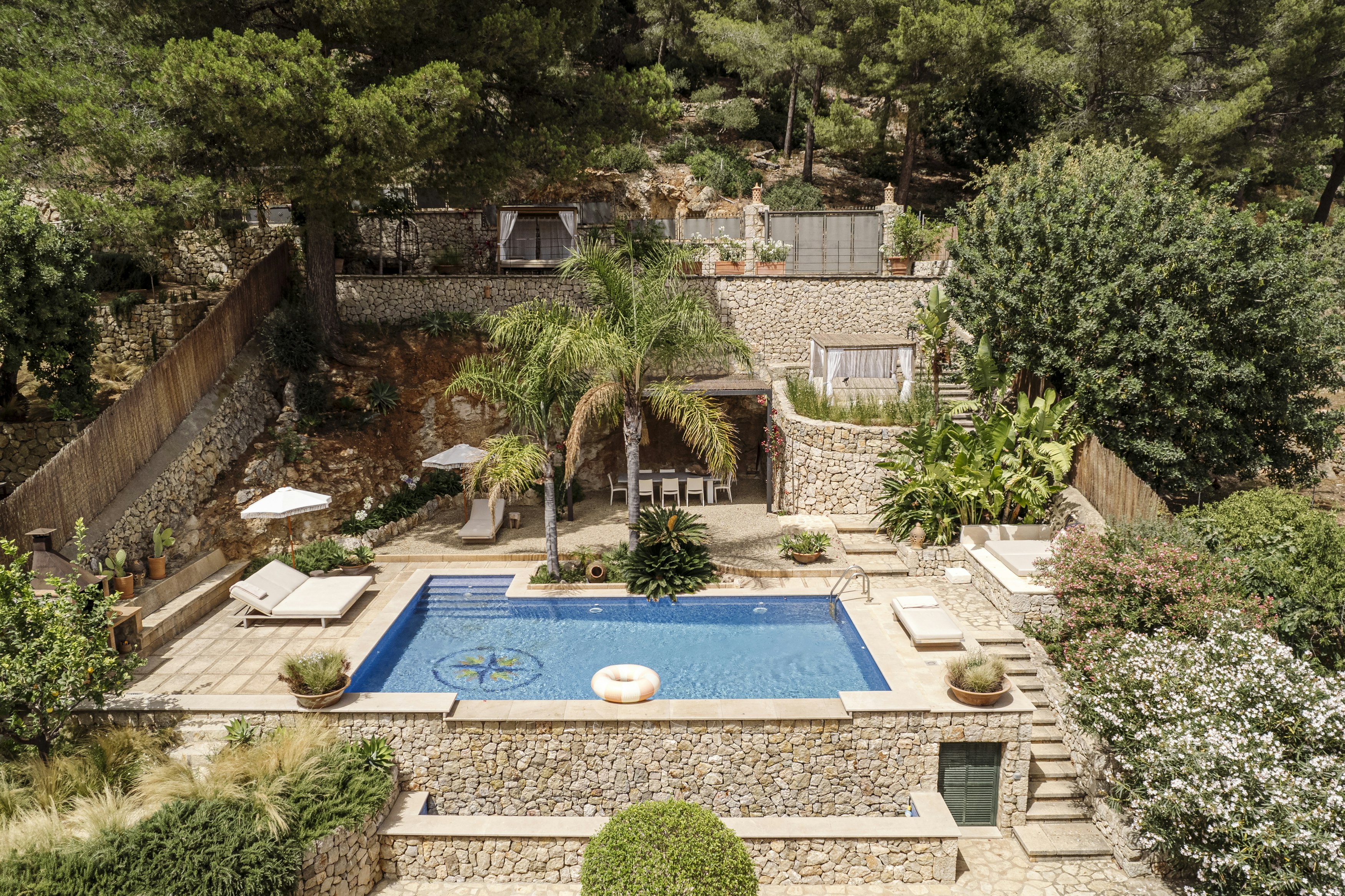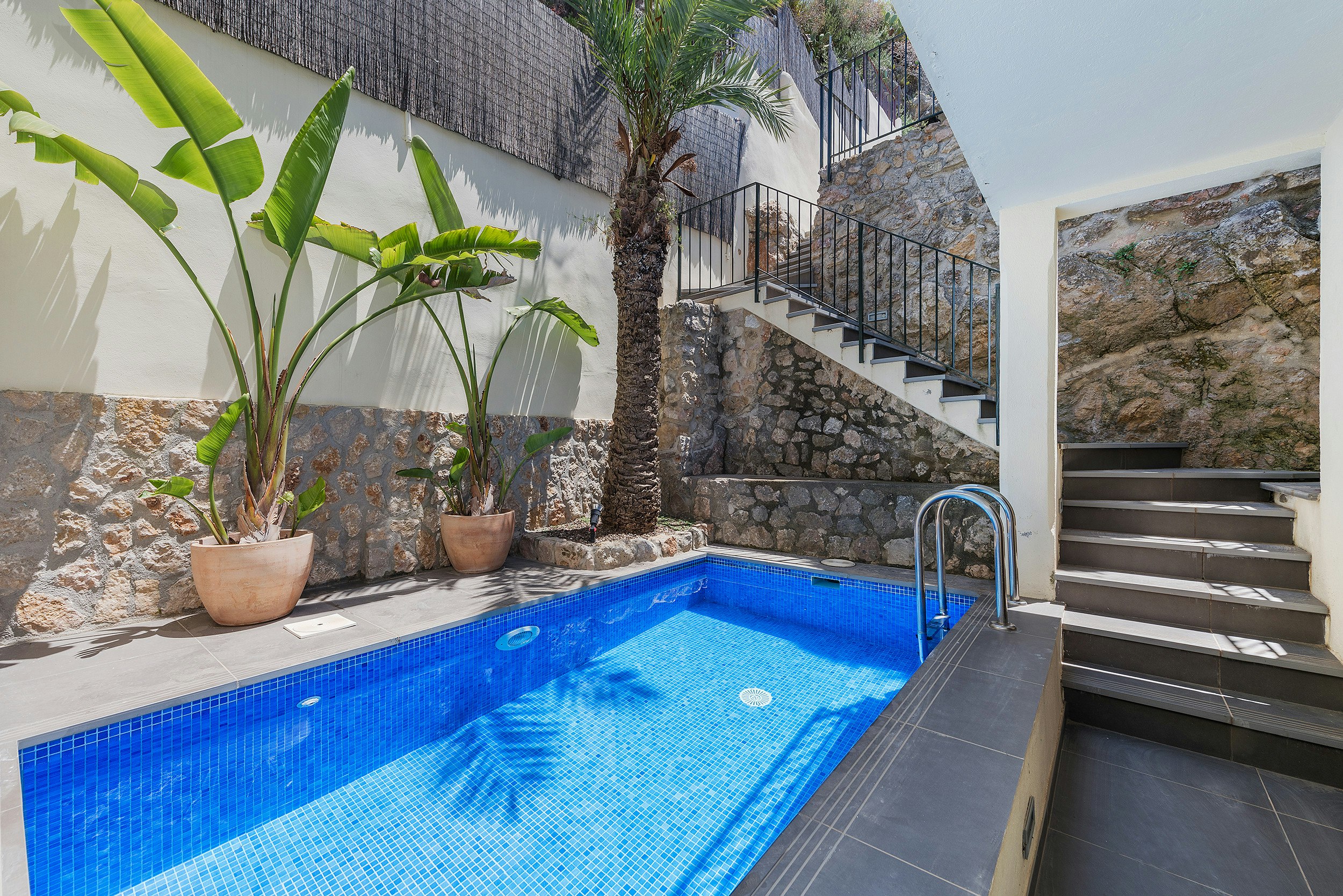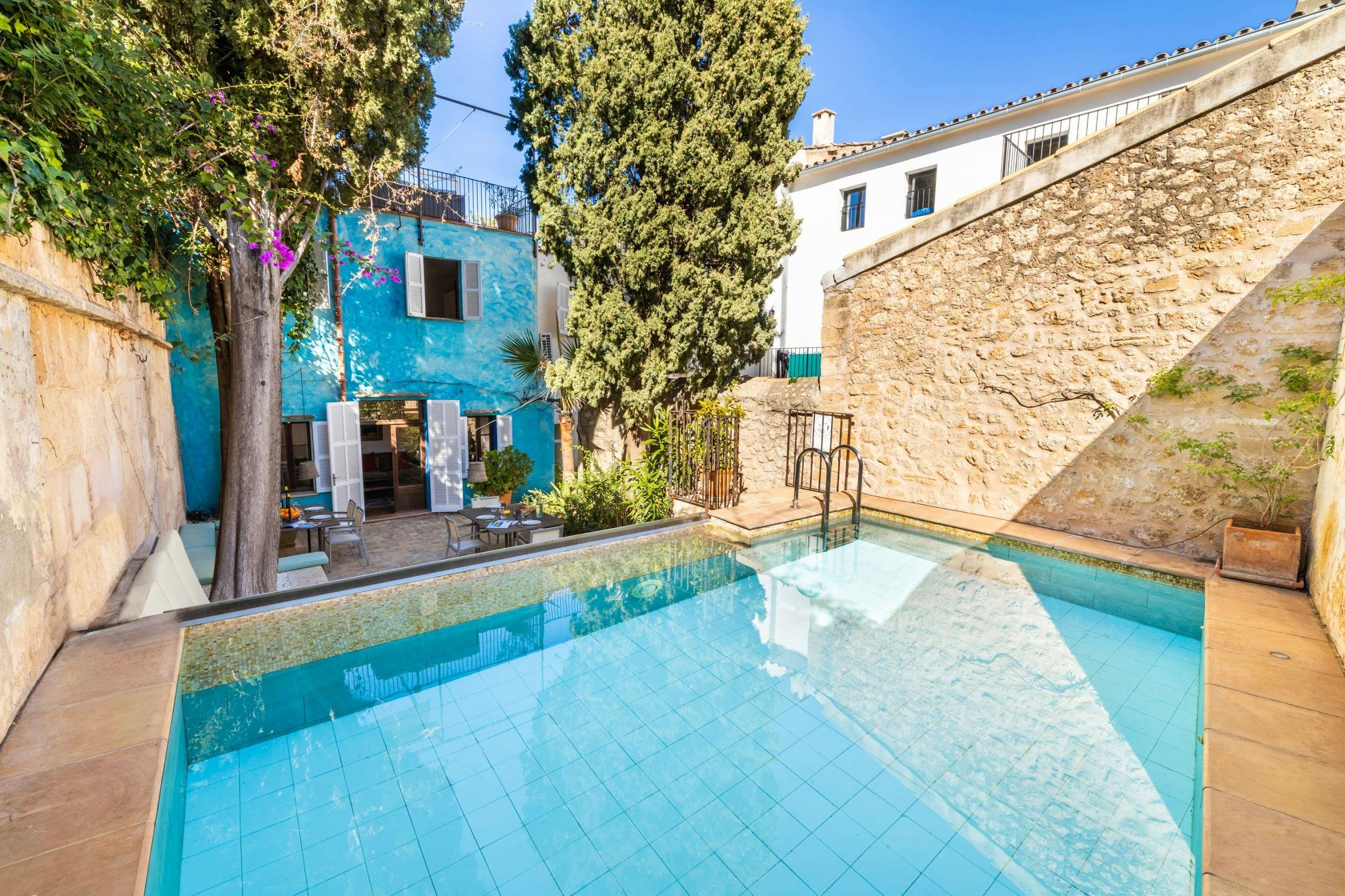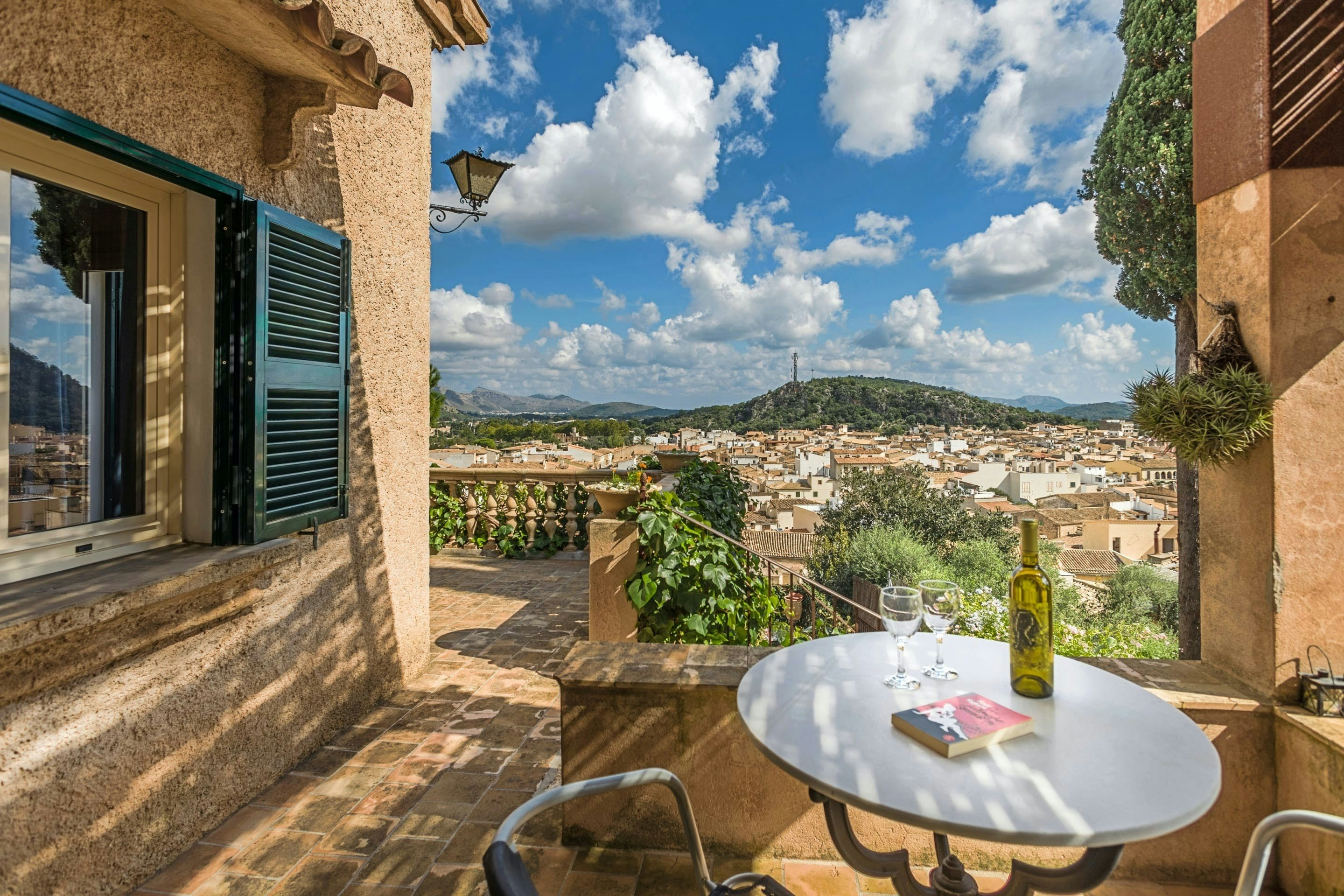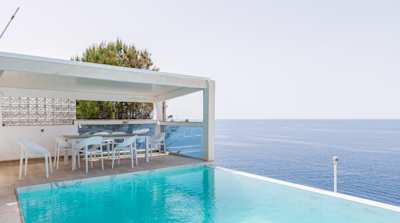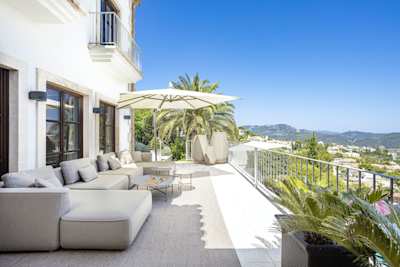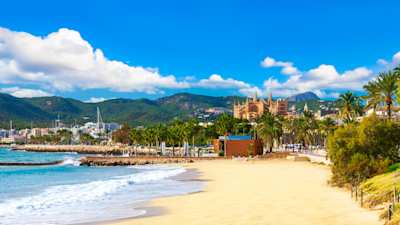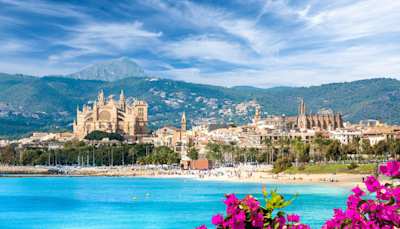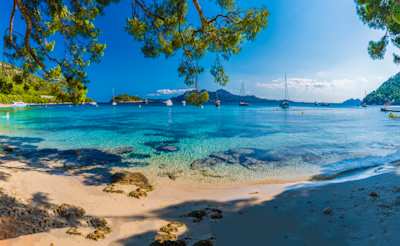Busy Places To Avoid in Mallorca & Other Tips To Escape the Crowds
Here’s how to enjoy a tranquil getaway on this Spanish island paradise
~

The largest of Spain’s Balearic Islands, Mallorca promises sun-soaked beaches, cultural treasures and outdoor adventures. It’s no surprise, then, that it attracts millions of visitors a year. If you still want to experience the beauty of Mallorca without having your holiday spoiled by bustling crowds, you’ve come to the right place. Our travel experts at Plum Guide know all the secret corners of the island and how to explore them best. Take a look at our guide on the overcrowded places to avoid in Mallorca, the best times to travel, and other tips.
Visit during the low season

Pink flowers in front of Catedral de Mallorca at sunset, Palma, Mallorca
Like most destinations in the Mediterranean, the summer months see the highest number of tourists. June to September are generally when Mallorca is at its busiest, with most visitors flocking to the island’s golden sand beaches. But if you’re not willing to share the shore with thousands of other sunbathers, we recommend visiting during the low season. Spring (March to May) is one of our favourite seasons in Mallorca, because not only have the crowds not arrived yet, but the weather is beginning to warm up, with temperatures ranging between 18° and 24°C. It’s the perfect time for outdoor activities, as it’s not too hot to cycle or hike the mountainous interior. On the days when you’re not working up a sweat, check out the range of local markets in the towns and villages. This is when they start to open back up after winter, and you can buy everything from local produce to handicrafts.
If you can’t make it in spring, autumn is a good alternative. Most of the visitors will have left by mid to late September, and the water temperatures stay warm all the way through October. It’s also a more pleasant time to stroll around Palma de Mallorca’s streets, and you can still enjoy alfresco meals in Plaça Major. Autumn is also harvest season, so foodies may want to plan their visit around this time. Local produce like mushrooms, almonds, grapes and pine nuts are in abundance, and you’ll find them used in traditional dishes in local restaurants. Speaking of grapes, wine enthusiasts will be pleased to know that autumn is the best time to take a tour of the wineries. There are over seventy on the island, so you won’t run out anytime soon.
See all of Plum Guide's homes in Mallorca
Explore the island’s lesser-known attractions
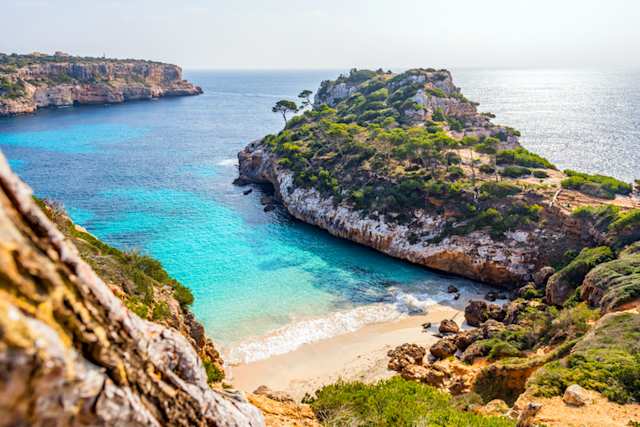
Small sandy cove surrounded by rocks, Calo des Moro beach, Mallorca
One of the best ways to avoid places in Mallorca with crowds is to seek out its hidden gems. Despite being such a popular holiday hotspot, you’ll be surprised to find that there are still plenty of places that tourists haven’t gotten wind of yet.
Those interested in learning more about Mallorca’s history should head to Artà in the northeast of the island. Nestled in a valley, this historic town is overlooked by the impressive Santuari de Sant Salvador. Walk up the winding road to this hilltop monastery, which was built in the 14th century around the time of the bubonic plague when it was thought that altitude would protect people from the disease. The mesmerising interiors are worth seeing, as are the marvellous views of the island. On the outskirts of Artà is Ses Païsses, the remains of a Talayotic village from the Bronze Age. We recommend visiting with an expert guide for the full experience.
Mallorca also has plenty of hidden bays and secluded beaches for when you want to relax in peace. Llucalcari Beach (also known as Es Canyaret), tucked away on the island’s north coast, is one of the prettiest spots. Slather yourself with mud in the mud pools before rinsing off in the cool waters. Other quiet beaches you should visit include Es Calo del Moro in the southeast, Cala Varques in the east and Platja d’es Carbò in the south.
When it comes to eating out, we recommend skipping the tourist restaurants and heading for the places that cater to locals. You’ll get a more authentic experience and the food is often much better. One of our favourite places is Restaurante Can Amer in the pretty town of Inca. Run by the same family since the 1960s, expect traditional Mallorcan food like suckling pig and lamb stuffed with sobrasada (cured sausage).
Explore our homes in Palma de Mallorca
Stay in less popular towns
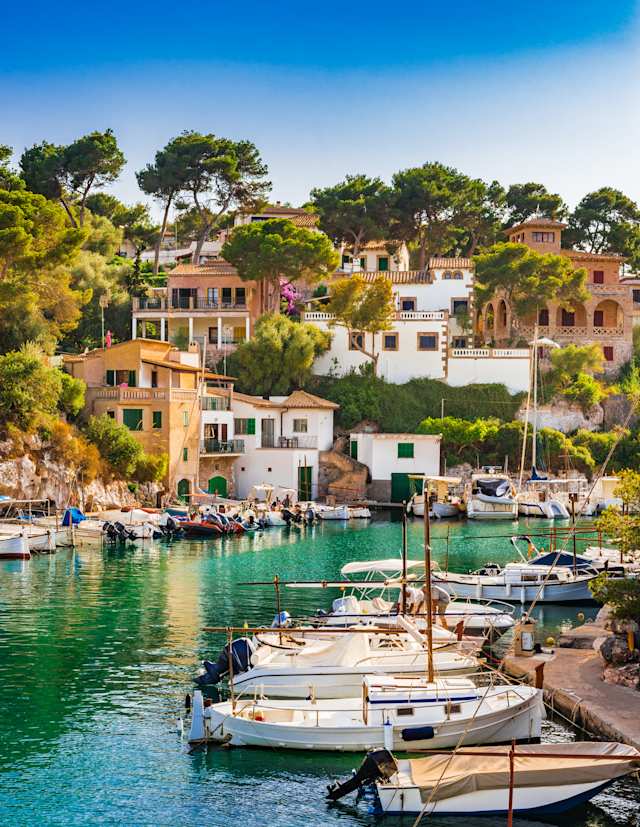
The old fishing harbour in Cala Figuera, Mallorca
While popular destinations like Palma and Magaluf offer plenty of things to see and do, they can also get overrun with tourists, especially during the summer months. If you're searching for a less crowded option, they'd be top on our list of places to avoid in Mallorca. Luckily, it’s easy to avoid these places and stay somewhere more peaceful and laid-back.
You may think that all the coastal destinations are rammed with holidaymakers, but there are still a handful of sleepy fishing villages and coastal towns that don’t see that many tourists. One of these is Cala Figuera. Just a ten-minute drive from the town of Santanyi, this is a typical Mallorcan fishing village with whitewashed houses and colourful boats in the small but picturesque harbour. Although there’s no sandy beach here, this does mean that it hasn’t been developed for tourism.
If no beaches are a deal breaker, then head to the resort town of Canyamel. Although it has a white sandy beach, it still manages to fly under the radar, making it one of the best places for a quiet holiday. One side of the beach is surrounded by a nature reserve and estuary, perfect for walking and bird watching if you fancy a change from snorkelling and sunbathing.
If you don’t mind being a little away from the coast, we recommend heading inland to spend time in Mallorca’s hinterland. In the heart of the island’s wine country are Raiguer's twin towns of Consell and Santa Maria del Camí, surrounded by lush mountains and sprawling vineyards. Consell is quieter, but oenophiles will want to stop by to take a tour of Bodega Ribas which has been producing Mallorcan wines since 1711. If you’re in town on a Sunday, don’t miss the towns’ markets to pick up some unique souvenirs.
Check out our homes in Raiguer, Mallorca
Take day trips to nearby islands

People walking on Plaza Cathedral in the centre of Ciutadella, Menorca
An island-hopping adventure is a fun way to discover the coast, especially if you’re thinking of sightseeing and want to know what places to avoid in Mallorca. The Balearic Islands also include Ibiza, Formentera and Menorca. While Ibiza is a popular destination, Formentera and Menorca are much quieter. Although there are public ferries connecting the islands, you can also charter a boat for a touch of luxury.
Just off its northeast coast, Menorca is known as Mallorca’s little sister. Its relatively unspoilt coastline and lack of party towns make it an appealing choice for those who just want to relax by the sea. There’s plenty of culture to soak up too, and the lively capital of Mahón (also known as Maó) boasts historic buildings, galleries, museums and an array of independent shops. Be sure to visit the port of Ciutadella to take a wander around the medieval streets of the Old Town. Menorca is known for its gin production, made popular when the island was occupied by the British. Today, you can visit the Xoriguer distillery and learn how the gin is made, sampling the various flavours – there’s everything from prickly pear infusions to mulled wine-style schnapps.
Formentera is a little further away, about three and a half hours by public ferry, but faster if you were to hire your own boat. This tiny island is known for its pristine white beaches and turquoise waters that look like they’ve come straight out of a postcard. There’s not much in terms of historic or cultural attractions – the main activities here include lying on the beach, snorkelling and scuba diving. In the north of the island is the Ses Salines Natural Park, home to salt marshes, wetlands and the stunning Illetes Beach.
Discover our homes in Pollença
Hire a car or bicycle and explore at your own pace

A white bicycle by a beach in Majorca, Spain
Hiring a car and exploring on your own is ideal if you want to know what busy places to avoid in Mallorca. Skip the group tours and enjoy the flexibility of having your own vehicle, arriving at attractions early in the morning or late in the afternoon to dodge the crowds. Self-driving also means you get to discover off-the-beaten-path gems and remote areas that aren’t accessible via public transport. Mallorca has plenty of scenic driving routes, taking you past dramatic coastlines through rugged mountain ranges and lush valleys.
Mallorca is also one of Europe's most popular cycling destinations, attracting approximately 150,000 cyclists each year. The island offers a diverse range of routes, from relaxing rides to challenging climbs. Whether you’re considering a bike-packing adventure or easy day trips along panoramic trails, cycling is a fantastic way to see Mallorca. Not only is it more environmentally friendly, but you’ll also get to take things in at a slower pace, exploring less-visited destinations that tourists don’t go to.
Why choose Plum Guide?
Unlike other platforms, Plum Guide carefully selects and vets every home in our collection, so you can book with peace of mind every time.
